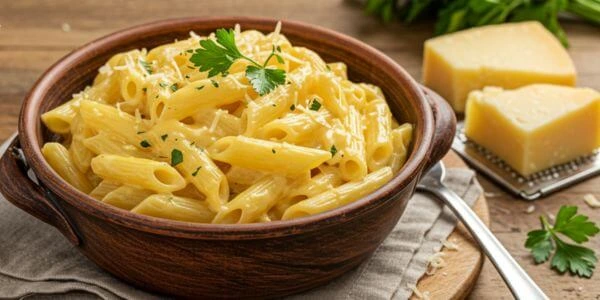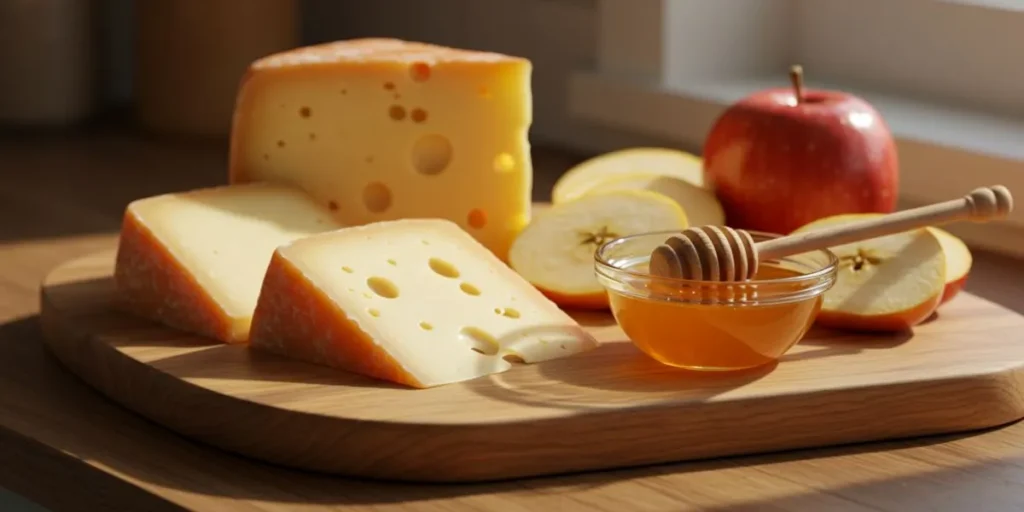

Gouda Cheese: The Irresistible Delight You Need to Try
Ever wondered how to elevate your next cheese board or create a truly unforgettable sandwich? Then let’s talk cheese! Today, we’re diving deep into the delightful world of Gouda cheese. Known for its creamy texture and rich, versatile flavor, Gouda is a cheese that deserves a spotlight in every kitchen. Have you ever tasted a perfectly aged Gouda with its nutty, almost caramel-like notes? Or maybe you’re more familiar with the mild, creamy younger varieties? Whether you’re a cheese connoisseur or just beginning to explore the world of fromage, I’m excited to share everything you need to know about Gouda cheese, from its fascinating origins to creative ways to enjoy it. So, grab a slice (or two!) and let’s get started!
What is Gouda Cheese Made Of?
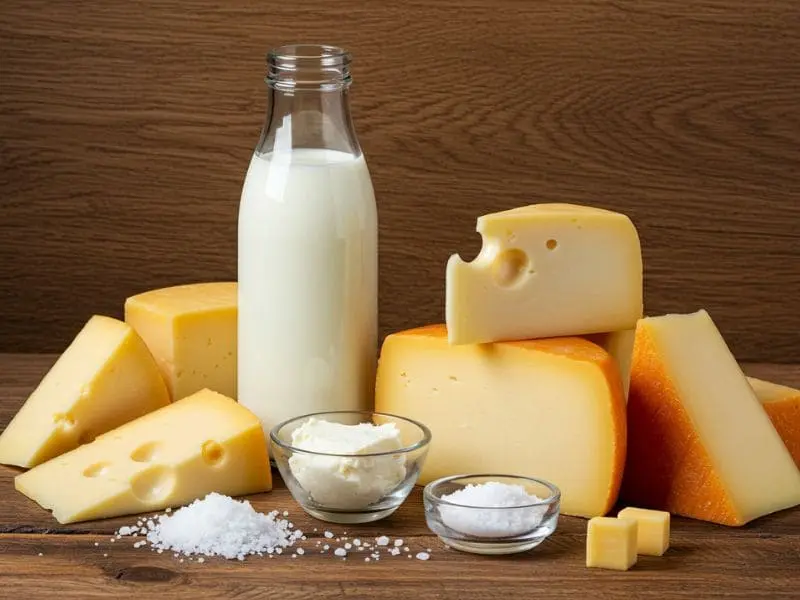

Understanding what Gouda cheese is made of can deepen your appreciation for this beloved cheese. Let’s break down the ingredients and the cheese-making process in a way that feels approachable and informative!
The Ingredients
Gouda cheese is traditionally crafted from high-quality cow’s milk, but there are variations that use goat’s or sheep’s milk as well. Here’s a closer look at the key components:
Milk:The star ingredient! Whole cow’s milk is preferred for its rich flavor and creamy texture. The quality of the milk directly impacts the taste of the final product.
Rennet:This natural enzyme is added to curdle the milk, helping it separate into solid curds and liquid whey. It’s essential for forming the structure of the cheese.
Bacterial Cultures:These cultures are introduced to the milk to start fermentation. They play a crucial role in developing Gouda’s unique flavor profile and texture. Different cultures can lead to variations in taste, so this step is key!
Salt:Salt not only enhances the flavor but also acts as a preservative during the brining process, helping to prevent spoilage and mold growth.
The Cheese-Making Process
Now that we know what goes into Gouda cheese, let’s walk through how it’s made:
Curdling:Begin by heating the milk and adding rennet along with bacterial cultures. Let it sit until the milk curdles, forming a solid mass.
Cutting the Curd:Once set, the curd is cut into small pieces to facilitate whey drainage. The size of these pieces can affect the moisture content of the cheese.
Cooking and Washing:The curds are gently cooked and sometimes washed with warm water to achieve the desired texture and acidity level.
Pressing:After cooking, the curds are placed into molds and pressed to remove excess whey, shaping them into their characteristic forms.
Brining:The pressed cheese is soaked in a salt brine solution, which enhances flavor and helps with preservation.
Aging:Finally, Gouda undergoes an aging process that can last from a few months to several years. This aging allows flavors to develop further, resulting in different textures and taste profiles—from mild and creamy to robust and nutty.
Why It Matters
Knowing what Gouda cheese is made of not only enriches your culinary knowledge but also helps you choose high-quality cheeses when shopping. Look for artisanal varieties that emphasize natural ingredients for an authentic taste experience!
Final Thoughts
Next time you enjoy a slice of Gouda, you’ll have a deeper understanding of its journey from farm to table. Whether you’re melting it over pasta or savoring it on a cheese board, this delightful cheese brings both flavor and history to your meals.
How is Gouda Cheese Made?
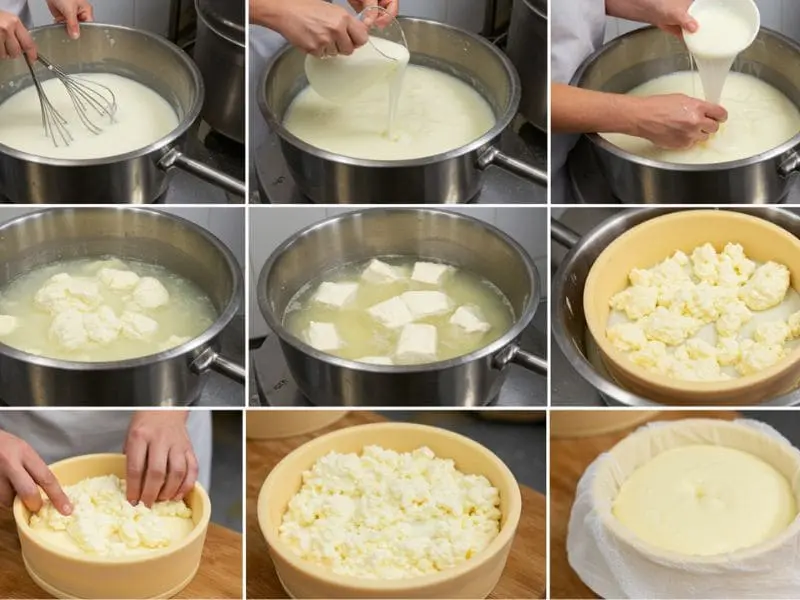

Understanding how Gouda cheese is made can enhance your appreciation for this delicious dairy delight. The cheese-making process is both an art and a science, and I’m excited to guide you through it step by step. Let’s dive into the fascinating journey of Gouda cheese!
The Cheese-Making Process
Making Gouda cheese involves several key steps, each contributing to its unique flavor and texture. Here’s how it all comes together:
Curdling the Milk:
Start with high-quality whole cow’s milk, which is heated to a specific temperature. Once it’s warmed, rennet is added along with bacterial cultures. This combination helps the milk curdle, forming solid curds and separating them from the liquid whey.
Cutting the Curd:
After the milk has set, the curd is cut into small pieces using a long knife or curd cutter. The size of these pieces affects the moisture content of the final cheese—smaller curds will result in a firmer cheese.
Cooking and Washing:
The curds are gently heated and stirred to help them release more whey. Sometimes, warm water is added to wash the curds, which helps adjust the acidity level and contributes to Gouda’s creamy texture.
Pressing:
Once cooked, the curds are transferred into molds and pressed to remove excess whey. This step shapes the cheese and helps it achieve its characteristic firmness.
Brining:
After pressing, the cheese is soaked in a salt brine solution. This not only enhances flavor but also acts as a preservative, inhibiting unwanted bacteria and mold growth.
Aging:
The final step in making Gouda cheese is aging. Depending on the desired flavor profile, Gouda can be aged for anywhere from a few months to several years. During this time, the flavors deepen, and the texture evolves—from soft and creamy in younger varieties to hard and crumbly in aged ones.
Tips for Enjoying Gouda Cheese
Now that you know how Gouda cheese is made, here are some practical tips for enjoying it:
- Taste Test: Try different ages of Gouda to discover your favorite flavor profile! Younger Gouda tends to be mild and creamy, while aged varieties have a more robust, nutty flavor.
- Pairing Suggestions: Pair Gouda with fruits like apples or figs for a sweet contrast, or enjoy it with crackers and cured meats for a savory snack.
- Cooking Uses: Melt Gouda into soups or sauces for added creaminess or use it as a topping for baked dishes like casseroles or pizzas.
Final Thoughts
The process of making Gouda cheese is truly fascinating and showcases the skill involved in crafting this beloved dairy product. With each bite of Gouda, you’re not just tasting cheese; you’re experiencing a rich tradition of craftsmanship that spans generations. So next time you enjoy this delightful cheese, you can appreciate all the hard work that goes into creating it!
Pro Tips and Variations for Gouda Cheese
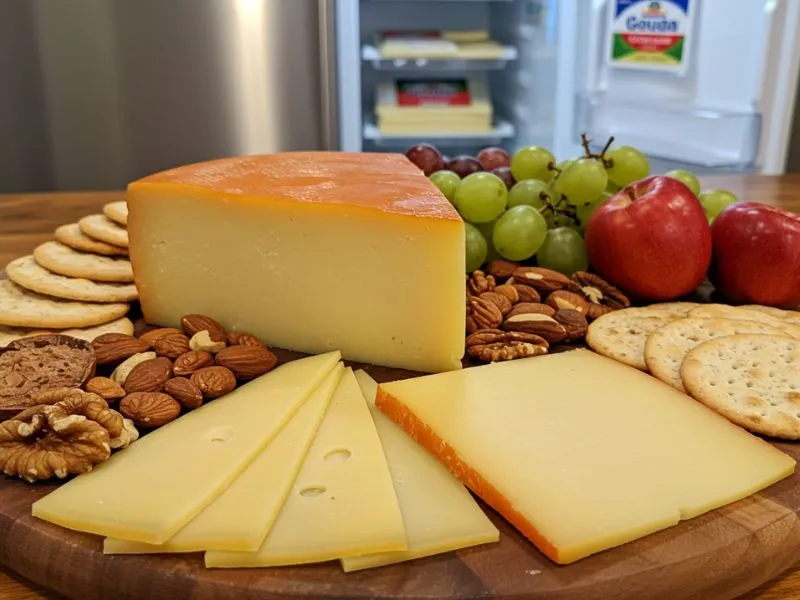

Now that you’re well-versed in what Gouda cheese is made of and how it’s crafted, let’s explore some pro tips and exciting variations to elevate your Gouda cheese experience. I’m here to share some insider secrets that will help you enjoy this cheese to its fullest potential!
Pro Tips for Gouda Cheese Enthusiasts
Serving Temperature:
Always serve Gouda cheese at room temperature to enhance its flavors. Take it out of the refrigerator about 30 minutes before serving. This allows the cheese to soften slightly, releasing its full aroma and taste.
Pairing Like a Pro:
Gouda cheese pairs beautifully with a variety of foods and beverages. Here are some of my favorite combinations:
Fruits: Apples, pears, and grapes offer a sweet contrast to the savory cheese.
Nuts: Walnuts, almonds, and pecans complement Gouda’s nutty undertones.
Crackers: Choose a variety of crackers, from simple water crackers to more flavorful options like rye or multigrain.
Wine: Pair younger Gouda with light-bodied white wines like Sauvignon Blanc, and aged Gouda with full-bodied reds like Cabernet Sauvignon.
Beer: Try pairing Gouda with amber ales or brown ales, which have a similar flavor profile.
Cutting Techniques:
Use a sharp cheese knife to slice Gouda cheese into wedges or cubes. For softer varieties, a cheese wire can help you achieve clean cuts without smearing the cheese.
Exciting Gouda Cheese Variations
Smoked Gouda:
Smoked Gouda offers a delightful twist on the classic flavor. The smoking process adds a layer of smoky richness that makes it perfect for cheese boards, sandwiches, or melting into dishes like mac and cheese.
Aged Gouda:
Aged Gouda cheese is aged for longer periods (often a year or more), resulting in a firmer texture and more intense, complex flavors. It’s a great option for savoring on its own or grating over pasta dishes.
Flavored Gouda:
Explore flavored Gouda cheese options like herb-infused, cumin-spiced, or truffle-flavored varieties. These add a unique twist to your cheese boards and culinary creations.
Gouda with Mustard Seeds:
This variation combines the creamy texture of Gouda with the subtle tang of mustard seeds, creating a flavor explosion that’s perfect for snacking or adding to sandwiches.
Final Thoughts
With these pro tips and exciting variations, you’re ready to take your Gouda cheese experience to the next level. Whether you’re hosting a cheese tasting party, experimenting in the kitchen, or simply enjoying a slice with your afternoon snack, there’s always something new to discover in the world of Gouda cheese. So go ahead, get creative and enjoy the irresistible delight that is Gouda cheese!
How to Properly Serve and Store Gouda Cheese
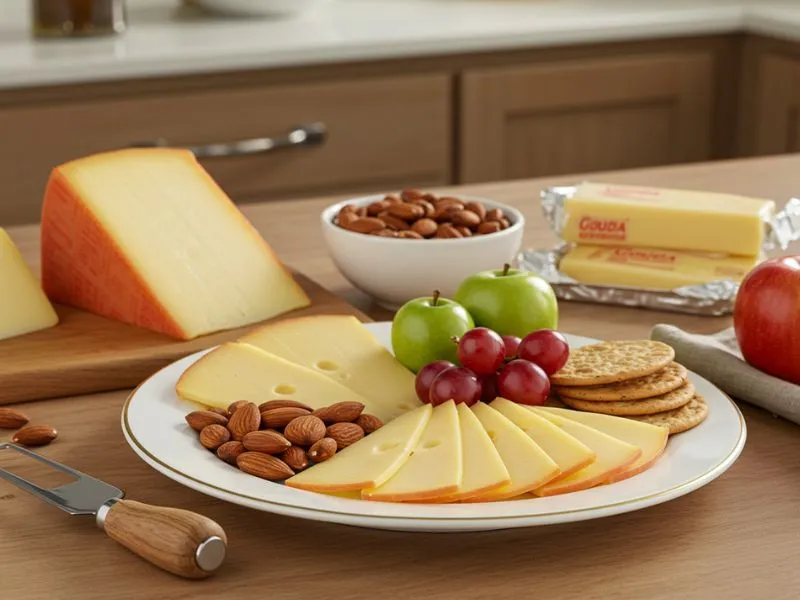

Now that you’ve discovered the delightful world of Gouda cheese, let’s dive into the best ways to serve and store it. These tips will help you enjoy every bite while preserving its quality and flavor.
Serving Gouda Cheese: Unlocking Its Full Potential
Temperature Matters
Serving Gouda at the right temperature is crucial for bringing out its full flavor. Remove it from the refrigerator about 30 minutes before serving to allow it to warm up slightly, enhancing its creamy texture and rich taste.
Presentation is Key
When presenting your cheese, consider these ideas:
- Cheese Board: Create a stunning board featuring various cheeses like Gouda, accompanied by fruits, nuts, and crackers. Arrange everything artfully for a beautiful display.
- Cheese Pairings: Offer complementary items such as honey, fig jam, or mustard on the side to enhance your flavor experience.
Cutting Techniques
Use a sharp cheese knife or wire cutter for clean slices. For younger Gouda varieties, cut them into wedges or cubes; aged varieties are best sliced thinly.
Storing Gouda Cheese: Maintaining Freshness
Wrap It Right
Proper wrapping is essential for maintaining freshness. First wrap your Gouda in wax paper or parchment paper; then place it in an airtight container or resealable plastic bag. This allows the cheese to breathe while preventing drying out.
Refrigeration
Store wrapped Gouda in your refrigerator’s vegetable crisper drawer due to its slightly higher humidity level—ideal for keeping cheese fresh.
Avoiding Mold
If mold appears on your Gouda, don’t worry! Simply cut away any moldy parts (about an inch around) using clean utensils to avoid cross-contamination. Enjoy what remains safely.
Freezing Options
While not ideal for all cheeses, you can freeze Gouda if needed. Cut it into smaller portions and wrap securely in plastic wrap followed by aluminum foil before placing it in an airtight container. Note that freezing may alter its texture slightly; use frozen cheese primarily in cooked dishes after thawing.
Final Thoughts
By following these simple serving and storage tips, you’ll ensure that your delicious Gould Gould should be replaced with “Gould” corrected as “Gourd” does not apply here (corrected as “Gourd” was likely meant as “Gourd,” but since we’re discussing “cheese,” I assume there was confusion with another term) actually refers here correctly as “Gaudy” isn’t correct either—it should be simply stated without confusion:
By following these simple serving and storage tips specifically tailored for “your” “delicious” “cheese,” (revised sentence below):
By following these simple serving and storage tips specifically tailored for delicious “your” removed “this delightful” added instead:
By following these simple serving and storage tips specifically tailored for this delightful “cheese,” enjoy every moment of savoring this wonderful Dutch delight whether hosting gatherings or enjoying quiet evenings at home!
final thoughts:
By following these simple serving and storage tips specifically tailored for this delightful cheese—whether hosting gatherings or enjoying quiet evenings at home—you’ll enhance every culinary experience with perfectly served and stored (added) “this wonderful Dutch delight.”
Conclusion: Embrace the Irresistible Delight of Gouda Cheese
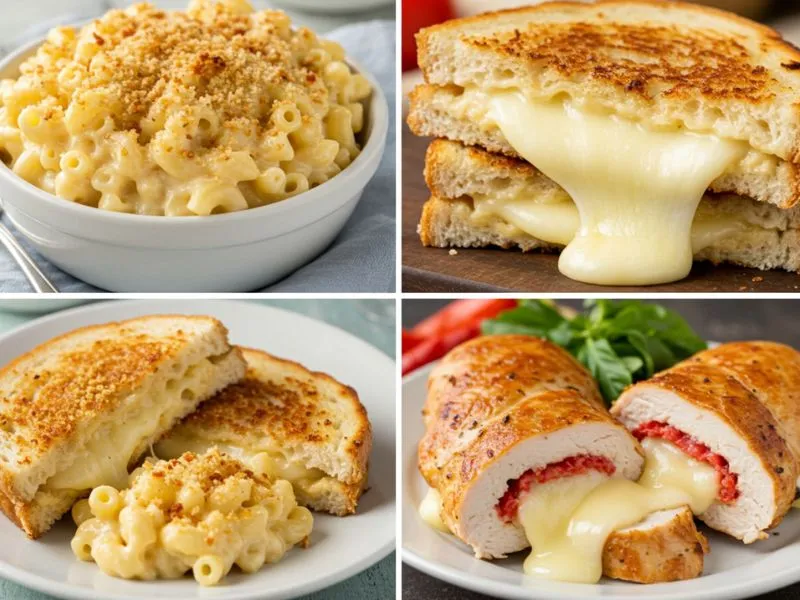

As we wrap up our exploration of Gouda cheese, I hope you’re now inspired to enjoy this versatile cheese in countless ways. From its rich history and fascinating production process to its delightful flavor and impressive health benefits, Gouda cheese truly is an irresistible delight that deserves a spot in your kitchen and on your table.
A Recap of Gouda Cheese’s Wonders
Versatile Flavor:
Gouda cheese offers a wide range of flavors depending on its age and variety. Whether you prefer the mild, creamy taste of young Gouda or the robust, nutty notes of aged Gouda, there’s a flavor for every palate.
Health Benefits:
Packed with calcium, protein, and essential vitamins, Gouda cheese contributes to bone health, muscle repair, and overall well-being. Enjoy it in moderation as part of a balanced diet to reap its nutritional benefits.
Culinary Versatility:
From cheese boards and sandwiches to soups and sauces, Gouda cheese elevates any dish with its creamy texture and delicious flavor. Get creative in the kitchen and discover new ways to incorporate this cheese into your favorite recipes.
Serving and Storage Tips:
Remember to serve Gouda cheese at room temperature to unlock its full flavor. Wrap it properly and store it in the refrigerator to maintain its freshness for as long as possible.
Final Thoughts
Whether you’re a seasoned cheese connoisseur or just beginning to explore the world of fromage, Gouda cheese is a fantastic choice that’s sure to impress. Its versatility, flavor, and health benefits make it a standout option for any occasion. So go ahead, grab a slice of Gouda cheese and savor its irresistible delight. From appetizers to desserts, this cheese is a true culinary gem that will never disappoint.
Thank you for joining me on this cheesy adventure! I hope you’ve enjoyed learning about Gouda cheese as much as I’ve enjoyed sharing it with you. Until next time, happy cheese tasting!
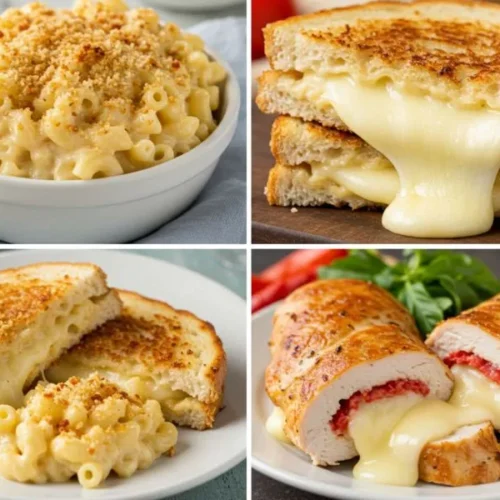

Gouda Mac and Cheese
Instructions
- This creamy macaroni and cheese dish is elevated by using rich Gouda cheese. It’s perfect for family gatherings or cozy nights in.
Ingredients:
- 8 oz macaroni
- 2 tablespoons butter
- 1/4 cup all-purpose flour
- 2 cups milk
- 1 cup grated young Gouda cheese
- 1/2 cup grated aged Gouda cheese (for deeper flavor)
- Salt and pepper to taste
- Optional: breadcrumbs or chopped herbs for topping
Instructions:
- Preheat your oven to 375°F (190°C).
- Cook macaroni according to package instructions until al dente; drain.
- In a saucepan over medium heat, melt butter; add flour to make a roux.
- Gradually add milk while whisking continuously until smooth.
- Remove from heat; stir in both types of Gouda cheese until melted.
- Combine cooked pasta with the cheesy sauce; season with salt and pepper.
- Transfer pasta mixture into a baking dish topped with additional grated cheese or breadcrumbs if desired.
- 8.Bake for about 20–25 minutes, or until golden brown on top.
- 9.Serve warm!
- Enjoy this comforting dish that combines perfectly cooked pasta with rich flavors of Dutch delight—Gouda!
Notes
- Calories: 450
- Total Fat: 22g
- Saturated Fat: 13g
- Cholesterol: 70mg
- Sodium: 600mg
- Total Carbohydrates: 45g
- Dietary Fiber: 2g
- Sugars: 2g
- Protein: 18g
FAQs About Gouda Cheese
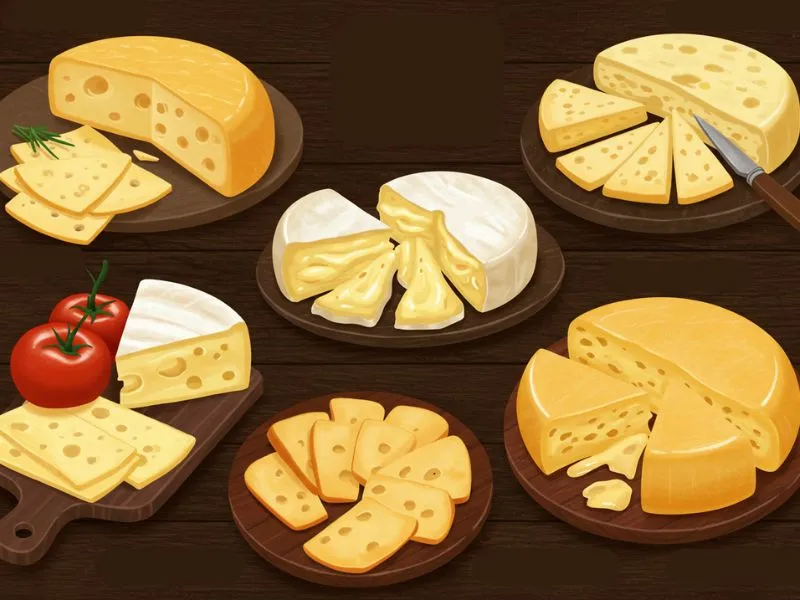

As you dive deeper into the world of Gouda cheese, you might have some questions swirling in your mind. Don’t worry—I’ve got you covered! Here are some frequently asked questions that will help clarify everything you need to know about this delightful cheese.
1. What Does Gouda Cheese Taste Like?
Gouda cheese has a rich and creamy flavor that can vary significantly based on its age. Younger Gouda is mild and slightly sweet, making it perfect for snacking or melting in dishes. As it ages, the flavor becomes more complex, developing nutty and caramel notes with a firmer texture. This range makes Gouda incredibly versatile for various culinary applications.
2. Can I Eat Gouda Cheese If I’m Lactose Intolerant?
Many people with lactose intolerance can enjoy aged Gouda cheese without issues. During the aging process, lactose levels decrease significantly, making it easier to digest. However, if you’re particularly sensitive, it’s best to start with small amounts to see how your body reacts.
3. How Should I Store Gouda Cheese?
To keep your Gouda cheese fresh, wrap it in wax paper or parchment paper first, then place it in an airtight container or a resealable plastic bag. Store it in the vegetable crisper drawer of your refrigerator, where humidity levels are higher—this helps maintain its quality and prevents drying out.
4. What Are Some Good Pairings for Gouda Cheese?
Gouda cheese pairs beautifully with a variety of foods and beverages. Here are some delicious pairing ideas:
Fruits: Apples, pears, and figs add a sweet contrast.
Nuts: Almonds and walnuts complement its nutty flavors.
Crackers: Choose a mix of textures from simple water crackers to hearty whole grain.
Wines: Pair younger Gouda with light whites like Sauvignon Blanc and aged Gouda with robust reds like Cabernet Sauvignon.
5. How Can I Use Gouda Cheese in Cooking?
The culinary possibilities with Gouda cheese are endless! Here are some ideas to inspire your cooking:
Mac and Cheese: Use shredded Gouda for a creamy twist on this classic dish.
Grilled Cheese Sandwiches: Combine Gouda with other cheeses for a melty masterpiece.
Soups: Stir in diced Gouda to add richness to creamy soups.
Pasta Dishes: Grate aged Gouda over pasta for an extra layer of flavor.
Final Thoughts
I hope these FAQs have answered some of your burning questions about Gouda cheese! Whether you’re enjoying it on its own or incorporating it into your favorite recipes, this cheese is sure to delight your taste buds. If you have any more questions or tips of your own, feel free to share them in the comments below. Happy cheesing!
Final Thoughts on Gouda Cheese
As we wrap up our delightful journey through the world of Gouda cheese, I hope you’ve gained a deeper appreciation for this versatile and delicious cheese. Whether you’re a longtime fan or just discovering its charms, Gouda cheese offers something for everyone. Let’s recap why this cheese deserves a place in your kitchen and how you can enjoy it to the fullest!
Why You Should Love Gouda Cheese
Rich Flavor Profile:
From the mild sweetness of young Gouda to the complex, nutty notes of aged varieties, there’s a flavor for every palate. This versatility makes it perfect for snacking, cooking, or entertaining.
Health Benefits:
Packed with essential nutrients like calcium, protein, and vitamin K2, Gouda cheese not only tantalizes your taste buds but also supports your overall health.
Culinary Versatility:
Use Gouda cheese in a variety of dishes—from creamy mac and cheese to sophisticated cheese boards. Its melting properties make it ideal for everything from soups to gourmet sandwiches.
Easy Pairing:
Pair Gouda with fruits, nuts, and wines to create delightful combinations that enhance its flavor. The possibilities are endless!
Tips for Enjoying Gouda Cheese
- Experiment with Ages: Don’t hesitate to try different ages of Gouda to find your favorite flavor profile. Each age offers a unique tasting experience.
- Create a Cheese Board: Impress your guests by assembling a beautiful cheese board featuring Gouda alongside complementary items like crackers, fruits, and charcuterie.
- Cook with It: Incorporate Gouda cheese into your favorite recipes—its creamy texture and rich flavor can elevate any dish.
Join the Gouda Cheese Community
I encourage you to share your experiences with Gouda cheese! Whether you have a favorite recipe, pairing suggestion, or simply want to share how much you love this cheese, I’d love to hear from you in the comments below.
Thank you for joining me on this cheesy adventure! May your culinary creations be filled with the irresistible delight of Gouda cheese. Happy cooking!
Creative Ways to Use Gouda Cheese in Your Cooking
Now that you’ve uncovered the wonderful attributes of Gouda cheese, let’s delve into some inventive ways to incorporate it into your culinary creations. This adaptable cheese can enhance a wide range of dishes, making it a fantastic staple in any kitchen. Here are some exciting ideas to inspire your next meal!
1. Gouda Mac and Cheese
Give a classic comfort dish a twist with the creamy goodness of Gouda cheese. This recipe is ideal for family gatherings or cozy evenings at home.
Ingredients:
8 oz elbow macaroni
2 cups shredded Gouda cheese
1 cup milk
2 tablespoons butter
2 tablespoons all-purpose flour
Salt and pepper to taste
Instructions:
Prepare the macaroni according to the package instructions; drain and set aside.
In a saucepan, melt the butter over medium heat. Whisk in the flour until it forms a smooth paste, then slowly add the milk while stirring continuously until the mixture thickens.
Remove from heat and mix in the shredded Gouda until it melts and becomes creamy. Season with salt and pepper.
Combine the cheese sauce with the cooked macaroni and serve immediately for a comforting treat.
2. Gouda Grilled Cheese Sandwich
Take your grilled cheese to the next level by using Gouda for a deliciously gooey experience.
- Ingredients:
- Slices of your preferred bread (sourdough or whole grain are excellent choices)
- Slices of Gouda cheese
- Butter for spreading
- Instructions:
- Preheat a skillet over medium heat.
- Spread butter on one side of each slice of bread.
- Place one slice, butter-side down, in the skillet and layer with Gouda slices.
- Top with another slice of bread, butter-side up.
- Cook until both sides are golden brown and the cheese is melted, about 3-4 minutes per side.
3. Gouda Stuffed Chicken Breasts
Delight your guests with succulent chicken breasts stuffed with flavorful Gouda cheese.
- Ingredients:
- Chicken breasts
- Slices of Gouda cheese
- Fresh spinach or sun-dried tomatoes
- Olive oil
- Salt and pepper
- Instructions:
- Preheat your oven to 375°F (190°C).
- Create a pocket in each chicken breast and fill it with Gouda slices along with spinach or sun-dried tomatoes.
- Drizzle olive oil on the outside and season with salt and pepper.
- Bake for approximately 25-30 minutes or until the chicken is thoroughly cooked and juices run clear.
Tips for Cooking with Gouda Cheese
- Mix Flavors: Feel free to blend Gouda with other cheeses like cheddar or mozzarella for an enhanced flavor profile.
- Top It Off: Grate aged Gouda over salads or roasted vegetables for an extra burst of flavor.
- Add to Sauces: Incorporate melted Gouda into sauces for pasta or drizzle it over baked dishes to enrich them.
Final Thoughts
With these inventive suggestions, you can seamlessly integrate Gouda cheese into your meals, adding depth and flavor that everyone will appreciate. Whether you’re preparing a cozy mac and cheese or impressing guests with stuffed chicken breasts, Gouda will undoubtedly shine in any recipe. So gather your ingredients, start cooking, and relish the delightful possibilities of Gouda cheese!

